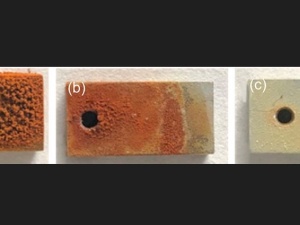Spiked Nanostructures Disrupt Fungal Biofilm and Impart Increased Sensitivity to Antifungal Treatment
Abstract
There is a globally increasing demand for medically implanted devices, partly spurred by an aging population. In parallel, there is a proportionate increase in implant associated infection. Much focus has been directed toward the development of techniques to fabricate nanostructured antimicrobial biomaterials to mitigate infection. The present study investigates the interaction of the fungal pathogen Candida albicans with an antimicrobial surface bearing nanoscale protrusions. C. albicans cells were observed to be affected by cell wall stress, which impeded its ability to switch to a hyphal phenotype. There are significant differences in the expression of C. albicans virulence-associated genes between the untreated and nanostructured surfaces. To determine whether the observed inhibition of C. albicans would also sensitize it to antifungal drugs, a culture is established for 3 days on the nanostructured surface before being treated with the antifungal drug amphotericin B. The drug was able to kill all cells on the nanostructured surface at sub-clinical concentrations, while remaining ineffective against cultures grown on a smooth control surface. These findings may eventually prove to be impactful in the clinic, as clinicians may be able to reduce antifungal drug dosages and minimize the effects of drug associated toxicity.
Full text:
Source: Image: Steve Gschmeissner/Science Photo Library/Corbis #42-22789643



